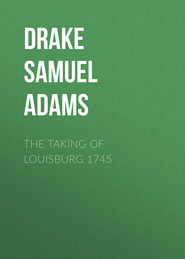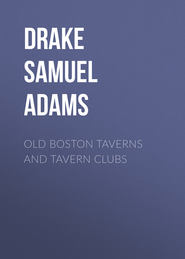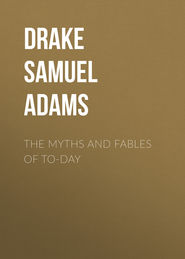По всем вопросам обращайтесь на: info@litportal.ru
(©) 2003-2024.
✖
The Battle of Gettysburg 1863
Настройки чтения
Размер шрифта
Высота строк
Поля
notes
1
Gettysburg is the county seat of Adams County; is one hundred and fourteen miles west of Philadelphia. Pennsylvania College is located here.
2
The National Cemetery was dedicated by Abraham Lincoln, Nov. 19, 1863; it is a place of great and growing interest and beauty. The National Monument standing on this ground, where sleeps an army, was dedicated by General Meade in 1869. The monument itself was designed by J. G. Batterson, of Hartford, Conn., the statuary by Randolph Rogers. In 1872 the cemetery was transferred to the national government. A large part of the adjoining ridge is in charge of the Gettysburg Battlefield Memorial Association, a corporation formed under the laws of Pennsylvania for the preservation of the field and its landmarks. No other battle-ground was ever so distinctly marked or so easily traced as this.
3
Shells remain sticking in the walls of some buildings yet. A memorial stone at the steps in front of the Lutheran church, on Chambersburg street, indicates the spot where Chaplain Howell, of the 90th Pennsylvania Volunteers, was shot dead while entering the church, then being used as a hospital.
4
The Lutheran Seminary was used both as a hospital and observatory by the Confederates. Lee's headquarters were in a little stone house quite near the seminary buildings, which are not more than half a mile from the centre of Gettysburg.
5
In 1863 all these hills were much more densely wooded than now, so forming an impenetrable screen to their defenders.
6
The bowlder-strewn strip of ground lying between Devil's Den and Little Round Top is the most impressive part of the field, I think.
7
He withdrew two corps, by his left, to Culpepper, leaving one in the trenches of Fredericksburg. Had this corps been crushed while thus isolated, as it ought, Lee's invasion must have ended then and there.
8
A glance at the map shows how the northerly bend of the Potomac facilitated an invasion by this route. The outposts at Harper's Ferry and Winchester having been forced, there was nothing to stop the enemy's advance.
9
The Confederate army comprised three infantry corps, and one of cavalry. Each corps had three divisions, each division averaged a little over four brigades, of which there were thirty-seven present at Gettysburg. The British Colonel Freemantle, who accompanied Lee's army, puts the strength of these brigades at two thousand eight hundred men each. The relative strength of the army corps was more nearly equal than in those of the Union army. The Confederates brought with them two hundred and seventy pieces of artillery.
10
The main body, under Stuart, had gone around the rear of the Union army, by Lee's permission, in the expectation of harassing it while on the march, and of then rejoining Ewell, on the Susquehanna. It failed to do either, and many attribute all of Lee's misfortunes in this campaign to the absence of Stuart.
11
Jenkins, who commanded, was paid in his own coin at Chambersburg, by the proffer of Confederate scrip in payment for some alleged stolen horses. He himself had been professedly paying for certain seized property in this same worthless scrip.
12
Contrast this with the generous, even prodigal, way the Union soldiers were provided for, and who can doubt the devotion of these ragged Confederates to their cause?
13
So long as this division remained at York, the question as to where Lee meant to concentrate would be still further confused. See diagram.
14
Early levied a contribution on the borough, which the town council evaded by pleading poverty.
15
A small Union force which had been holding the bridge set it on fire on the approach of the Confederates.
16
This was Colonel Freemantle, who has a good word for everything Confederate. On being courteously received within the Union lines after Gettysburg, he was much surprised to find that the officers were gentlemen.
17
At Pittsburg defensive works were begun. In Philadelphia all business was suspended, and work vigorously pushed on the fortifications begun in the suburbs. At Baltimore the impression prevailed that Lee was marching on that city. The alarm bells were rung, and the greatest consternation prevailed.
18
A great lukewarmness in the action of the people of Pennsylvania is testified to on all sides. See Professor Jacobs' "Rebel Invasion," etc. About sixteen thousand men of the New York State militia were sent to Harrisburg between the 16th of June and the 3d of July; also several thousand from New Jersey (but ordered home on the 22d). General Couch was put in command of the defences of Harrisburg.
19
Hooker would not cross the Potomac until assured that Lee's whole army was across. He kept the Blue Ridge between himself and Lee in obedience to his orders to keep Washington covered.
20
The presence of Lee's cavalry would have allowed greater latitude to his operations, distressed the Pennsylvanians more, and enabled Lee to select his own fighting-ground.
21
So long as these passes were securely held, Lee would be shut up in his valley.
22
Open to serious objections; but then, so are all plans. Tied down by his orders, Hooker would have taken some risks for the sake of some great gains. By closing every avenue of escape, it would have ensured Lee's utter ruin, provided he could have been as badly beaten as at Gettysburg.
23
This feeling was so well understood at Washington that a report was spread among the soldiers that McClellan, their old commander, was again leading them, and the report certainly served its purpose.
24
The army was not up to its highest point of efficiency. It had just lost fifty-eight regiments by expiration of service. This circumstance was known to Lee. The proportion of veterans was not so great as in the Confederate army, or the character of the new enlistments as high as in 1861 and 1862.
25











